Welcome to the guest room of Doors and Rooms. In this room you will be playing chess to escape. If you are unfamiliar with the rules, you have come to the right place. This walkthrough will guide you through the entire stage.
1. Pick up the fish off the wall.
2. Pick up the pot from left side of the room. Dismantle the pot to obtain a chess piece.
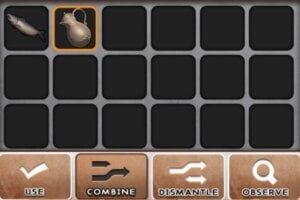
3. Check under the carpet for a chess piece.
4. Check the plant to the right side of the room for a chess piece.
5. Check the clock and note the positions as clue for the harp.
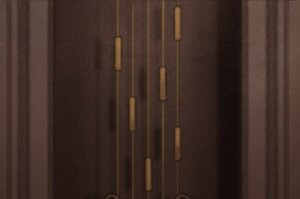
6. Play the harp based on the clock clue to unlock a key. If you are not sure, use the following sequence: 5-1-4-2-5-3
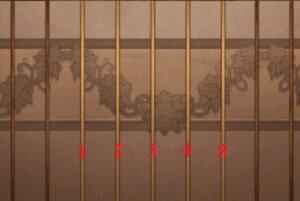
7. Obtain the key after playing the harp.
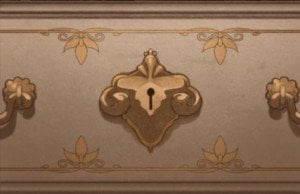
8. Use the key to open the drawer for chess notes and another chess piece.
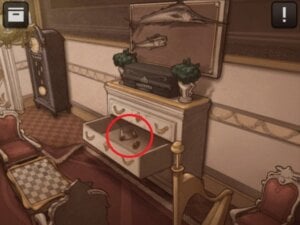
9. Place the fish into the bear to unlock the shelf underneath.

10. Open the drawer to obtain the final chess piece.
11. Now observe all of the chess pieces and place them on the board. Your goal is to figure out which “spaces” are the safe spots. If you are having trouble, we have graphed out the “safe zones” for this chess puzzle.
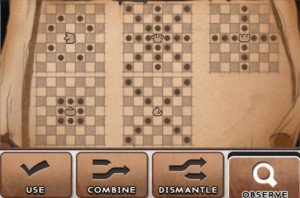
12. After going through an intense chess puzzle, you will find the answer to be following. Obtain the knife.
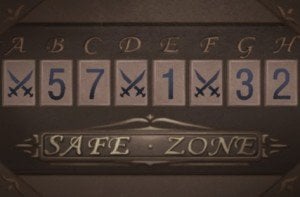
13. Dismantle the knife and insert into the final puzzle.
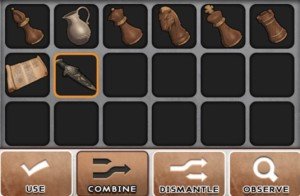
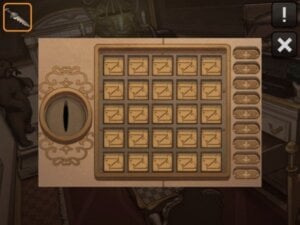
Your goal is to open up all the slots to pass the puzzle. If you are having trouble, we have prepared a very easy to use solution to guide you through the puzzle stage.
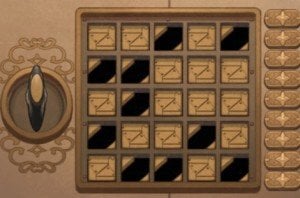

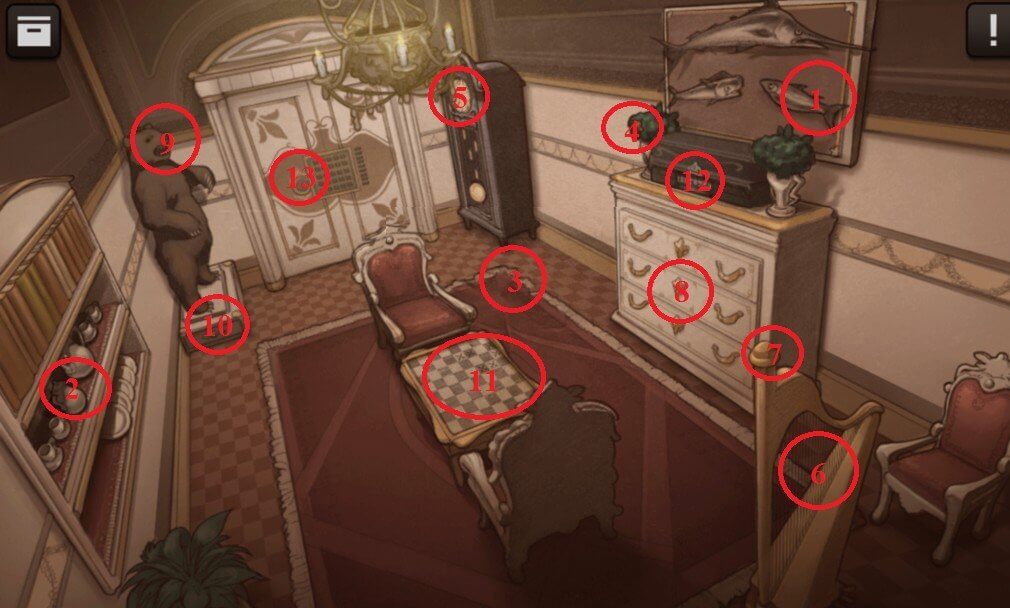
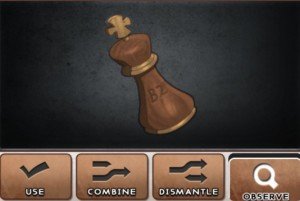


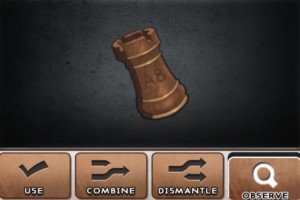



You suck
You rock..!!! 🙂
really thank u very much,great walkthrough
I want to ask according to what did u put red circles and green stars on the board
The red circles represent the moves available by the knight. The only spots open after each piece is placed and the possible move is made are the safe spots
Thank you so much, i was totally stuck on this one. You are so very helpful!
Thank you! This Guide is very helpful.
i can’t place the chess piece on the board…
Me either, i dont know how to place the chess pieces on the board?
You dnt place them on the board. You have to look at the chest pieces
Me neither…..how do I do it
How do u do the puzzle on the door at the very end?
You don’t actually place the chess pieces on the board. If you didn’t have the diagram provided in this guide you would have to draw the chess board and mark out all of the possible squares that the five chess pieces, if they started in their respective squares (etched on them) could move to. To do that you have to be able to recognize the pieces and understand chess rules enough to know which ways they can move.
The piece with the cross = king (place at B2), crown = queen (D4), pointy cap = bishop (G2), castle = rook (A8), and horse = knight (F4).
The other clue you picked up gives you the information about how each piece can move. It’s the paper that has each chess piece drawn in the center of the board with lines (or in the case of the knight, dots, because it can only move to those specific squares from where it starts). In the diagram on this solution page, the lines are drawn from each chess piece to show where it can move. Think as if you are this person’s opponent and you want to place your chess piece in a square where these five pieces can’t reach you. You will eliminate the possibilities by drawing those lines. The circles are the squares to where the knight (labeled N) could move. Note that they didn’t draw some lines if the squares they would cross already have been ruled out as unsafe. After all the lines and circles are drawn there should be five unmarked (safe) squares. These provide your answer.
Hope that helps!
Thanks for this! However, I don’t understand why B5 would be a safe square as it lies in the direct path of the King in B2. The King has the ability to take unlimited steps in any direction; this would have eliminated the entire B row as a safe zone. Can someone explain this for me?
My bad. I obviously mixed up the King and the Queen pieces. Actually it is mislabeled on your diagram as well. B2 should be “Q” for Queen, and D4 should be “K” for King.
Oh, my mistake again. I have the functions of the king and queen mixed up. I obviously don’t play chess very often!
how do you place them
Thank you for all the information!! I would nerver past this room without your help ❤
Como chegou a solução da porta…?
¿Qué me dicen de G4 y H4 en el tablero? Eso no es saber reglas de ajedrez… eso es saber lo que a huevo quieren los creadores del juego.
¡Pésimo nivel! ¡El peor de todos! ¡No tiene ningún sentido ni nada de lógico eso!!!
Actually G4 and H4 are safe because as of the rules of chess a piece can not move past a piece in the same row or column. The knight is in the Q way so there are actually two safe zones on G and H
That’s what I thought also. Lost a lot of time because of that.
I am having some confusion with the chess board what to do ? I can’t “place” the king on b2 and any other piece . please help
Guys if you don’t know chess moves this will be tough. Anyways I don’t know why they call it safe zones it makes it confusing.. What you do place 5 pieces on the board and check all of the squares where they could potentially move. You can use a guide you got. Also check the squares with enemy. So after this you have 5 empty squares left on the board. And that’s the code.
I’m not very fond of this fifth chapter of doors and rooms, as I can’t read sheet music and don’t know how to play chess. I also don’t know binary coding which was in another chapter. I’d be lost without you.
My last puzzle by the door is not the same as in the walk through. My blocks in the 4th row from the top is as follows (left to right) closed,closed.closed,open,open so the sequence in the walk through does not work with my puzzle. Please help me with a sequence that will.
How do you know what kind of chess pieces are already on the board?? Are they pawns or all queens????
Hey!
Thanks for your side. It helps me a lot at some times i couldn‘t solve a puzzle. Now the problem is that the end code changed and i can‘t solve it after 1 hour of trying! thx
no puedo abrir las ranuras final ya que a mi me sale diferete que la ilustracion. Por que?
Fun but i have a different puzzle at the end. It’s the same puzzle but begin setting is different therefor the givensolution does not work ;-(
The door puzzle won’t open even following the essy steps nimbered? Why?
The door puzzle won’t open even following the easy steps numbered. Why?
On the door puzzle it shows 4 being closed and 6 being open on your pic.on mine it shows both 4 and 6 is closed so the code does not work i cant open the door HELP
Hello,
I don’t have the same puzzle at the end, It shows the open cases: 1-3, 1-5, 2-1, 2-2, 3-2, 4-4, 4-5, 5-2, 5-3 and 5-5. Could someone help me please ?
Thanks
Change moves 8 and 9 in the solution 🙂
Change moves 8 and 9 in the solution 🙂
Change them where? Changing them between thereselves doesn’t work. Puzzle isn’t solving.
I followed your sequence for the door puzzle and it isn’t working
Your answer for the door doesn’t work.
Mine is different as well. Open is 1-3 1-5 2-1 2-2 3-2 4-5 5-2 5-3 and 5-5
9 open spaces and you start out with 10.
I also agree you have to read music and know how to play chess to solve these puzzles. Not very realistic to be enjoyed by everyone.